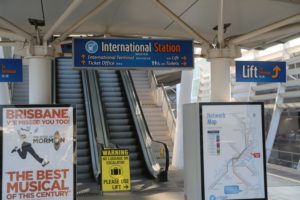
 Most airlines haven’t operated for several months since February. They have incurred huge losses and some of them resulted in laying off some workers. But, normalcy has started returning in the aviation industry. The following are four ways in which air travel has adapted to make travel safer.
Most airlines haven’t operated for several months since February. They have incurred huge losses and some of them resulted in laying off some workers. But, normalcy has started returning in the aviation industry. The following are four ways in which air travel has adapted to make travel safer.
1. Flight Attendants have New PPE Uniforms
Plane aisles in the worst airports globally resembled fashion runways for many years, as flight attendants were always dressed smartly. But, cabin crews are now wearing Personal Protective Equipment (PPEs). AirAsia, Philippine Airlines, Thai Airways, and Qatar Airways are among the leading airlines that have started providing flight attendants with PPE uniforms. The Philippine Airlines flight attendants are wearing white jumpsuits and face shields while those from AirAsia wear uniforms that resemble red HAZMAT jumpsuits.
Dr. Niket Sonpal, a professor at the Touro College of Medicine, said that airlines need to train cabin crews on how to wear and take off PPE. All airports need to embrace the use of PPE to improve air travel safety. Airports and airlines need to support their staff and educate them on the need to follow the outlined health guidelines.
2. Robots are Cleaning Airports
Research shows that ultraviolet C (UV-C) damages the RNA and DNA of the virus hence preventing it from replicating. Robots in vast airports like the Pittsburgh International Airport use UV light to clean floors. The airport was already working with Carnegie Robotics.
Most cleaning robots use chemical disinfectants and high water pressure. The American startup installed a UV-C component in the robots including Amelia, Wilbur, Rose, and Orville. Christina Cassotis, CEO of Pittsburgh International Airport, said that the airport staff and travelers love these robots.
3. Airports are Using Touchless Technology
Touchless technology significantly reduces the time travelers spend when boarding airplanes. Non-contact tools will prevent the virus from spreading in airports. Customs officers will use biometric devices to scan the faces of travelers instead of inspecting their passports physically. Delta, JetBlue, and Air France were among the first airlines to adopt this technology.
4. Mobile Apps Enhance Touchless Travel
Passengers usually use smartphones to change seats and check into flights. Mobile applications will interface with gates and kiosks to eliminate the need of touching them. Also, mobile alerts will prevent travelers from overcrowding at waiting bays. American airports such as the Miami International Airport are installing Safe Distance, a motion-analytic software, to help travelers maintain social distancing.
The aviation industry is one of the most dynamic industries in the transport sector. It uses sophisticated technology that enables airports to operate seamlessly and increase safety. Stakeholders in the industry have created new safety measures like providing flight attendants with PPE uniforms, performing frequent medical screenings, and adopting the touchless technology to increase the safety of air travel.





Leave a Reply